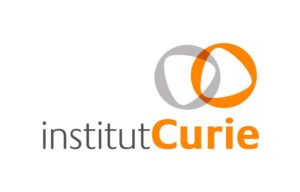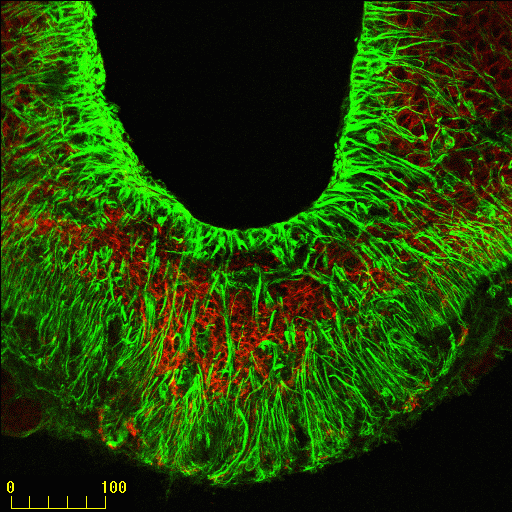France BioImaging 4th Annual Meeting: Future challenges in BioImaging, April 14 2017, Institut Curie – Paris
Starts: April 14, 2017
Address: 12 Rue Lhomond, Paris, France

On Friday April 14 2017, we will have the pleasure to welcome you to our Annual Meeting, to be held at the Curie Institute (Paris, France). This event, open to all members of the bioimaging community, aims to provide a platform to discuss pivotal subject matters in our field. This year, the France BioImaging Annual meeting will focus on the topic of “Future challenges in BioImaging”.
This main topic will be divided into six “challenges”, as described below:
CHALLENGES
Challenge 1: “QUANTIFICATION OF THE MOLECULAR DYNAMICS AND COORDINATION IN CELLS AND SMALL ORGANISMS, INCLUDING AT THE NANOMETER SCALE”
This session will focus on emerging in super-resolution, single-molecule and fluctuation microscopies. The session will bring together scientists working on new technological developments, on new probes, and new acquisition schemes including three-dimensional and in depth imaging. Specifically, we will aim to cover the following topics:
- Quantification of dynamics in Super-Resolution, single-molecule, and fluctuation based microscopies.
- Use of adaptive optics for in depth imaging in tissues or small organisms
- New technologies for 3D imaging, including single-molecule localization and STED.
- New probes for super-resolution and fluctuations techniques.
- Micro-scale dynamics and molecular interactions by fluctuation techniques.
The main purpose will be to discuss and brainstorm on the key methodological challenges in this field in the near future (5 years).
Challenge 2: “IMAGING ARCHITECTURES AND PROCESSES OF LIFE, FROM MOLECULAR COMPLEXES TO MULTI CELLULAR SYSTEMS”
Imaging Microscopy to explore biological systems in space and time and across scales, including the observation of development, growth and aging of organisms, is a major challenge. This session is dedicated to future challenges in microscopy imaging to integrate molecular architecture, spatial and temporal control of gene expression, sub cellular dynamics and cell behaviors in morphogenesis and organogenesis.
Keywords: Multimodal an multiscale imaging; developmental biology; in toto 3D+time imaging; super resolution in correlative approaches; CLEM.
Challenge 3: “NEW FRONTIERS FOR IMAGING, SENSING, AND CONTROLLING BIOMOLECULES”
Methods for remote control of cellular processes by means of a trigger (light, magnetic field,…) have seen explosive growth. Recently, efforts have led to the engineering of powerful approaches in which fusing biomolecules with triggerable modules enables to turn their function on and off in response to the trigger action. Associated with intrumental tools (e.g. optical methods of active illumination or excitation beam shaping), these approaches have yielded an outstanding alternative to standard genetic or pharmacological methods with much improved spatiotemporal resolution to analyze cell signaling and other molecular regulation in cells and multicellular complexes. On the other hand, new probes and methods allow for visualization and sensing of molecules in live cell and during the development of multicellular organisms. This challenge should reflect the latest progresses on how the integration of chemistry and biology will frame our ways to investigate Life Sciences.
Challenge 4: “UNCONVENTIONAL IMAGING”
The combination of imaging techniques with spatially and temporally tailored beams and reconstruction algorithms provide new approaches to cell imaging. These approaches exploit the properties of electromagnetic fields, such as polarization, spectrum or wavefront diversity, and new measurement schemes. We will discuss the implementation of such unconventional imaging techniques and the specific challenges that they face in terms of sensing, collection, data processing, and interpretation.
Unconventional imaging techniques include imaging from polarization/phase/aperture diversity, imaging using ultrafast pulses or wavefront control, imaging through turbid media
Challenge 5: “BIOIMAGE INFORMATICS, IMAGE PROCESSING AND MICROSCOPY DATA MANAGEMENT”
This session will focus on emerging technologies in life science regarding microscopy, informatics & applied mathematics. The purpose is to bring together scientists working in the area of informatics and scientists working in life sciences who uses microscopy as a main tool in their research. Specifically, this session will cover some of the following themes:
– Visualization, manipulation and analysis of large multidimensional images
– Image correlation and fusion of multimodal and multiscale images
– Data mining and machine learning in biological studies from microscopy images
– Spatiotemporal Modeling and simulation of biological mechanisms
– Information Technologies for distributed computing, smart data storage and interactive image data bases.
Challenge 6: “NEW BIOLOGICAL MODELS AND APPROACHES: HOW WILL THEY FRAME THE NEXT CHALLENGES IN BIOIMAGING?”
In recent years, the Life Sciences have experienced an impressive number of methodological revolutions, and many new fields of investigation have opened up. This is reflected in a diversification of our models of studies (new model organisms, plant and marine; stem cells hiPCs, IPCs…), new approaches of genetic engineering (genome editing, CRISPR/Cas), new large-scale programs (Brain imaging initiatives…) and new biological concepts (epigenetics…).
These discoveries and research directly impact or will necessarily impact current or future biological imaging technologies. The purpose of this session will be to reflect on and discuss the challenges ahead. It will allow, through the multi-disciplinarity represented within FBI and consistent examples, to define the major issues that our community will have to confront in the next 5 to 10 years.
Of the six challenges, four were selected to be part of the final program : Challenges 1, 2, 3 & 5. Challenges 4 & 6 will be represented during the poster session.
SCHEDULE & PROGRAM
Oral Sessions Schedule
Poster Session Program
CALL FOR ABSTRACTS
The call for abstracts is now closed.
However, you can still find specifications for your poster in the following document:
Abstract Submission & Guidelines
REGISTRATION
Registration is now closed. Thank you to all who submitted abstracts.
FREQUENTLY ASKED QUESTIONS
Who can participate?
The meeting is open to all members of the bioimaging community (within and outside the France BioImaging community) who are eager to share their thoughts, ideas and research on the challenges described above.
How can I participate?
Anyone can participate by submitting an abstract for an oral presentation as part of the sessions, or for a poster presentation.
How can I submit an abstract?
Abstracts are to be submitted at the time of registration.
Abstract Submission Guidelines
Abstract Template
Can I choose the kind of presentation I want to give?
During the registration process, one can choose whether to give an oral or a poster presentation. However, due to the limited amount of slots available for oral presentations, submissions that have not been selected to be part of a session can still be presented during the poster session. Candidates also have the option to apply for an oral presentation only, or a poster presentation only.
How much does the meeting cost?
Registration is free, and lunch and coffee breaks will be provided on site. However, travel and accommodation expenses are to be covered by participants.
LOCATION
Institut Curie, 12 rue Lhomond, 75005 Paris, France


Directions




